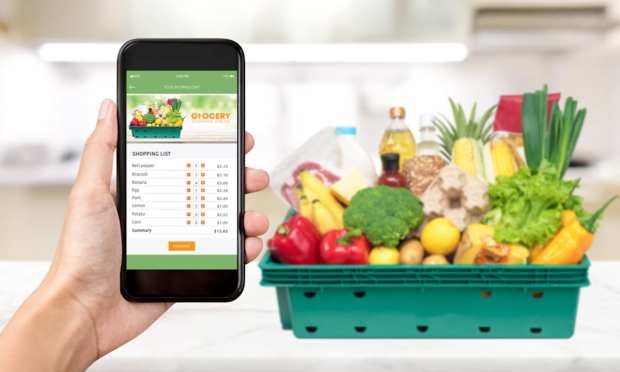Shoppable Recipes Turn Brick-and-Mortar Grocery Shoppers into Omnichannel Customers

Increasingly, the experience of browsing culinary content and that of shopping for food and beverages is becoming unified, with the emergence of contextual commerce that make recipes and tutorials shoppable.
This week alone, Sprouts Farmers Market announced livestream series geared towards turning New Year’s health resolutions into grocery purchases, Whole Foods Market announced an interactive web tool to do the same, and Martha Stewart’s Martha.com announced a partnership with grocery marketing platform Chicory to monetize its content with shoppable integrations.
“As online grocery adoption has continued from 2020 to 2021 and now into the new year, the boundaries, the walls, between being on a retailer’s site and being on high-intent content are starting to blur,” Yuni Sameshima, co-founder and CEO of Chicory, said in an interview with PYMNTS. “So, if you’re a Kroger shopper, if you’re a Sprouts shopper, of course, if you’re on that retailer’s site, you have high intent. But just because you leave that retailer’s site, does not make you not a Kroger shopper.”
He noted that, with integrations that target consumers while they are viewing relevant content, grocers can add more commerce occasions.
Related news: Digital Features Can Help Grocers Win Over 43 Percent Of Shoppers
Sure enough, the share of consumers open to making their grocery purchases online is growing. In fact, research from PYMNTS’ study “What Consumers Expect From Their Grocery Shopping Experiences” study, created in collaboration with ACI Worldwide, which surveyed more than 2,300 U.S. grocery shoppers about their buying behaviors, found that 34% now utilize online channels to make grocery purchases, and 18% of grocery shoppers reported that they prefer buying digitally to shopping in stores.
Everything’s Coming Up Martha
It has been a big week for Martha Stewart’s food and media empire. In addition to announcing this major integration to monetize all the site’s content, the brand’s parent company Marquee Brands also announced Wednesday (Jan. 5) the forthcoming opening of the first Martha Stewart restaurant, further boosting the brand’s visibility. The Chicory partnership, for its part, will add “Get ingredients” buttons to the site’s recipes.
Read more: Martha Stewart Announces First Restaurant, Hints at More Down the Line
“We’re very excited to partner with Martha. We want to partner with more and more sites like that, more top tier publishers,” said Sameshima. “Our goal is to be ubiquitous across any recipe content.”
Back in July, Chicory partnered with lifestyle media brand PureWow. Meanwhile, other major content companies have also been making moves into contextual grocery commerce. In September, for instance, Meredith announced a partnership with Walmart to integrate grocery shopping capabilities into its publications’ recipes.
See also: Walmart Partners With Meredith for AI-Informed Contextual Grocery Commerce
A Light Touch
At its best, contextual commerce seamlessly blends shoppability into consumers’ existing digital routines. However, Sameshima noted, in the rush to drive online sales at the start of the pandemic, some attempts proved counterproductive by forcing the issue. He gave the example of someone seeing a shoppable shampoo ad while watching about whales with their child, an entirely disconnected experience.
“That can be a very frustrating experience — for consumers to all of a sudden be taken into a retailer environment when they’re not in a shopping mindset,” he said. “The risk there is that, quite frankly, you turn off those potential customers, because … they don’t want to be forced to shop.”
In fact, many consumers are not yet ready to take their grocery shopping online. Recent PYMNTS research featured in the study “Digital Economy Payments U.S. Edition January 2022: How U.S. Shoppers Paid During The Holiday Season,” found that the share of consumers that made retail purchases online last month (December 2021) was nearly 2.5 times higher than the share that bought groceries digitally.
Get the study: Digital Economy Payments January 2022 U.S. Edition
For now, with the already unforgiving margins of grocery, there can be challenges in monetizing content, calling on retailers to divert a share of their profit to other parties. However, Sameshima alluded to a product to be announced later this year that will enable “our publishers to monetize in a bigger way.”
Getting Personal
Sameshima highlighted Chicory data showing that consumers who shop online and in stores are 3.5 times more likely to be loyal to brands than in-store shoppers.
Additionally, he noted, “As we saw the world, at least for a brief moment, start to resemble a little bit of pre-pandemic normalcy with grocery shopping habits, we still saw that those who were buying online actually were more loyal.”
Contextual commerce integrations give grocers the opportunity to drive frequency with consumers who are not yet enrolled in their loyalty programs. Research from PYMNTS’ What Consumers Expect study found that 54% of grocery shoppers are members of their favorite grocery stores’ loyalty programs, leaving 46% of the market out of reach. By meeting these non-members in the digital spaces they already frequent, grocers can access new consumers, bringing them into the omnichannel fold.
Sameshima argued that, despite noise in early 2020 after Google eliminated third-party cookies, the pendulum is swinging back to using more consumer data to target digital experiences.
More details: Google Chrome To Eliminate Third-Party Cookies In Privacy Push
“I think there’s a there’s an even bigger research resurgence in contextual advertising, especially for those companies that don’t necessarily have first party data,” he said, noting that contextual integrations allow these companies a way to target consumers’ individual preferences. “The trend for reaching consumers [is] swinging back to content — people are realizing that context is just a better consumer experience.”